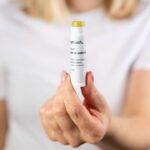If you’ve recently undergone laser hair removal, you may be surprised to notice some hair shedding in the days and weeks following your treatment. This phenomenon is not only common but also a normal part of the hair removal process. Laser hair removal works by targeting the pigment in hair follicles, effectively damaging them and inhibiting future hair growth.
However, as the treated hair follicles respond to the laser, it’s natural for some of the hair to shed. Understanding this process can help alleviate any concerns you may have about the appearance of your skin post-treatment. You might find yourself wondering how long this shedding will last and what factors could influence it.
It’s essential to recognize that while shedding is a typical response, the duration and extent can vary from person to person. In this article, we will explore the normal duration of hair shedding after laser treatment, the factors that can affect it, and how you can manage this phase effectively. By gaining insight into these aspects, you can better prepare yourself for what to expect and ensure a smoother transition as your skin heals.
Key Takeaways
- Hair shedding after laser treatment is a normal part of the process as the treated hair follicles are being expelled from the skin.
- The normal duration of hair shedding after laser treatment typically lasts for 1-3 weeks, but can vary depending on individual factors.
- Factors such as hair growth cycle, treatment area, and individual response to the laser treatment can affect the duration of hair shedding.
- Managing hair shedding after laser treatment can be done through gentle exfoliation, moisturizing, and avoiding picking or pulling at the shedding hair.
- Prolonged hair shedding after laser treatment may indicate an underlying issue and professional help should be sought if shedding persists beyond the normal duration.
Normal Duration of Hair Shedding After Laser Treatment
Typically, you can expect to see hair shedding begin within a week or two after your laser treatment session. This shedding occurs as the hair follicles enter a phase where they are no longer able to sustain hair growth due to the damage inflicted by the laser. For most individuals, this shedding process can last anywhere from two to four weeks.
During this time, you may notice that the treated areas appear patchy or uneven as some hairs fall out while others remain intact. It’s important to remember that this shedding is not an indication of ineffective treatment; rather, it signifies that the laser has successfully targeted the hair follicles.
Rest assured that this is a temporary state, and with time, you will see a significant reduction in hair growth in the treated areas.
Factors Affecting the Duration of Hair Shedding

Several factors can influence how long hair shedding lasts after laser treatment. One of the most significant factors is your individual hair growth cycle. Hair grows in three distinct phases: anagen (growth), catagen (transitional), and telogen (resting).
The effectiveness of laser treatment largely depends on whether the hair is in the anagen phase at the time of treatment. If a larger percentage of your hair is in this growth phase during your session, you may experience more pronounced shedding afterward. Additionally, your skin type and hair color can also play a role in how quickly shedding occurs.
For instance, individuals with darker hair and lighter skin tend to see better results from laser treatments because the contrast allows the laser to target the pigment more effectively. Conversely, those with lighter hair or darker skin may experience a longer duration of shedding due to reduced efficacy of the laser on their specific hair type. Other factors such as hormonal changes, medications, and overall health can also impact how your body responds to laser treatment and how quickly shedding occurs.
Managing Hair Shedding After Laser Treatment
| Managing Hair Shedding After Laser Treatment |
|---|
| 1. Use gentle shampoos and conditioners |
| 2. Avoid excessive heat styling |
| 3. Massage the scalp to stimulate blood flow |
| 4. Consider using hair growth products |
| 5. Consult with a dermatologist for personalized advice |
Managing hair shedding after laser treatment involves understanding what is happening with your body and taking steps to support your skin’s healing process. First and foremost, it’s crucial to avoid picking at or pulling out any hairs that are shedding. While it may be tempting to help the process along, doing so can irritate your skin and lead to complications such as ingrown hairs or infections.
Instead, allow your body to naturally shed the hairs as they loosen from their follicles. You should also focus on keeping your skin moisturized and protected during this time. Using gentle, hydrating lotions can help soothe any irritation and promote healing.
Additionally, it’s wise to avoid sun exposure on treated areas for at least a few weeks post-treatment, as your skin may be more sensitive and prone to damage. Wearing sunscreen or protective clothing can help shield your skin from harmful UV rays while it recovers.
When to Seek Professional Help for Prolonged Hair Shedding
While some degree of hair shedding is expected after laser treatment, there are instances when you should consider seeking professional help. If you notice that shedding continues beyond four weeks or if you experience excessive redness, swelling, or discomfort in the treated areas, it may be time to consult with your practitioner. These symptoms could indicate an adverse reaction or an infection that requires medical attention.
Additionally, if you find that new hair growth appears thicker or coarser than before treatment, this could be a sign that the laser was not effective for your specific hair type. In such cases, discussing your concerns with a qualified professional can help you explore alternative options or adjustments to your treatment plan. Remember that open communication with your practitioner is key to achieving the best results from your laser hair removal journey.
Tips for Minimizing Hair Shedding After Laser Treatment

To minimize hair shedding after laser treatment and ensure a smoother experience, there are several proactive steps you can take. First, adhere strictly to any pre- and post-treatment instructions provided by your practitioner. These guidelines are designed to optimize your results and minimize potential side effects.
For example, avoiding sun exposure before and after treatment can significantly reduce irritation and promote better healing.
Opt for fragrance-free moisturizers and soothing gels that can help calm any redness or sensitivity in treated areas.
Staying hydrated by drinking plenty of water can also support your skin’s overall health during this time. Lastly, maintaining a balanced diet rich in vitamins and minerals can promote healthy skin and hair growth, further aiding in recovery after laser treatment.
Understanding the Hair Growth Cycle and its Impact on Shedding
To fully grasp why hair shedding occurs after laser treatment, it’s essential to understand the hair growth cycle. Each hair follicle operates independently and goes through three main phases: anagen (growth), catagen (transitional), and telogen (resting). The anagen phase is when hair is actively growing and is most susceptible to laser treatment; therefore, multiple sessions are often necessary to target hairs in this phase effectively.
When you undergo laser treatment, only those hairs in the anagen phase will be effectively destroyed at that time. As a result, hairs in other phases may still be present and will eventually shed naturally as they transition through their cycles. This understanding can help you manage expectations regarding shedding duration and overall results from laser treatments.
Recognizing that not all hairs will respond simultaneously allows you to appreciate the gradual progress made over multiple sessions.
Conclusion and Final Thoughts on Hair Shedding After Laser Treatment
In conclusion, experiencing hair shedding after laser treatment is a normal part of the process that signifies effective treatment rather than failure. While it may be concerning at first glance, understanding the typical duration of shedding and the factors that influence it can help ease any worries you may have. By managing this phase with care—avoiding irritation, keeping your skin moisturized, and following professional advice—you can support your body’s natural healing process.
As you navigate through this transitional period, remember that patience is key. The results of laser hair removal often become more apparent over time as multiple sessions work together to reduce unwanted hair growth significantly. If you have any concerns about prolonged shedding or unusual symptoms, don’t hesitate to reach out to your practitioner for guidance.
With proper care and understanding of what to expect, you’ll be well on your way to enjoying smoother skin and reduced hair growth in no time.
If you are curious about how long hair shedding lasts after laser hair removal, you may find the article “Understanding the Laser Hair Removal Process” on the In Laser Hair Removal blog to be helpful. This article provides detailed information on the stages of hair growth and shedding after laser treatment, giving you a better understanding of what to expect during the process.
FAQs
What is hair shedding after laser treatment?
Hair shedding after laser treatment refers to the process where treated hair falls out as a result of the laser targeting the hair follicles. This shedding is a normal part of the hair removal process and is a sign that the treatment is working.
How long does hair shedding last after laser treatment?
Hair shedding after laser treatment typically lasts for 1 to 3 weeks. This can vary depending on the individual’s hair growth cycle and the specific type of laser treatment used.
Is hair shedding after laser treatment permanent?
The hair shedding after laser treatment is temporary and is a natural part of the hair removal process. Once the shedding is complete, new hair will begin to grow in the treated area.
Can I speed up the hair shedding process after laser treatment?
There is no guaranteed way to speed up the hair shedding process after laser treatment. However, gentle exfoliation and regular moisturizing of the treated area may help encourage the shedding process.
When should I be concerned about hair shedding after laser treatment?
If hair shedding continues for an extended period of time or if there are any signs of infection or unusual skin reactions, it is important to consult with a healthcare professional or the provider who performed the laser treatment.






